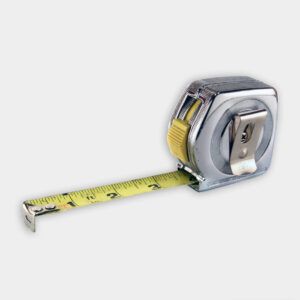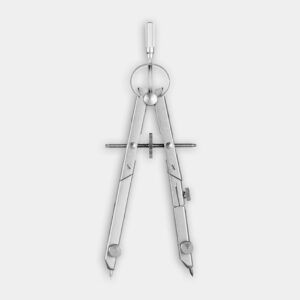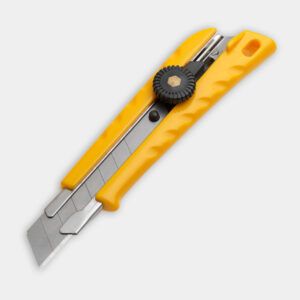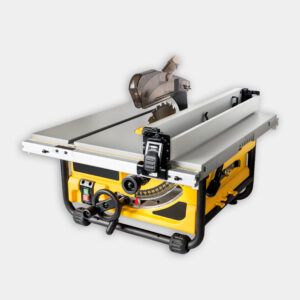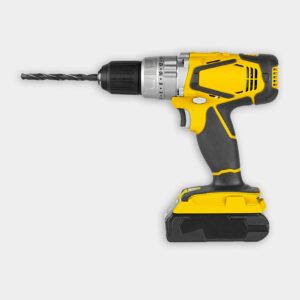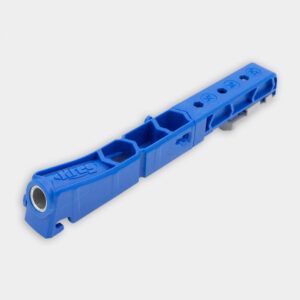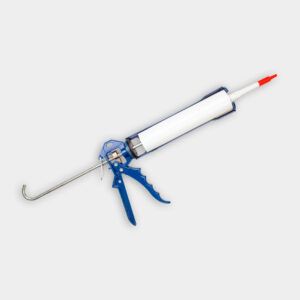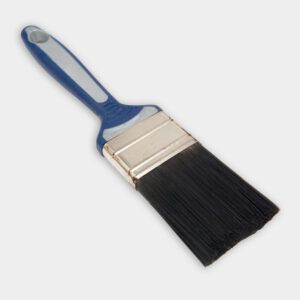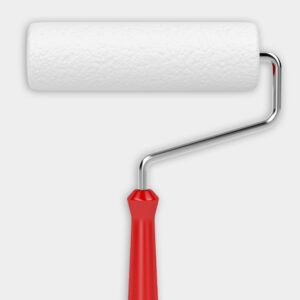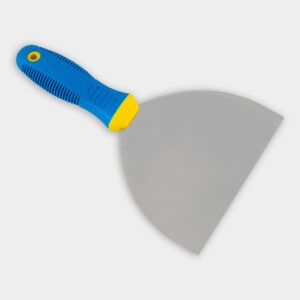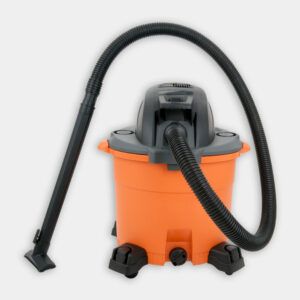We may be compensated if you purchase through links on our website. Our team is committed to delivering honest, objective, and independent reviews on home products and services.
Project details
Skill
Cost
Estimated Time
Built-in china cabinets are charming features in many older homes, but they can develop cracks over time due to temperature fluctuations and structural shifts. These cracks mar the appearance of the cabinet and compromise its functionality. Repairing this damage is a manageable do-it-yourself (DIY) project that can restore both the beauty and utility of your china cabinet. In this article, we’ll explore an effective method for fixing cracks in a built-in china cabinet, as demonstrated by This Old House carpenter Nathan Gilbert and paint expert Mauro Henrique in the video above.
Causes of Cabinet Cracks
Built-in cabinets in older homes often serve dual purposes. While they work as storage and display spaces, they may also conceal mechanical chases, such as heating pipes. Some common causes of cracks include the following:
- Hidden heating pipes: Concealed heating pipes behind the cabinet can cause localized heat that expands the surrounding wood or plaster. Over time, this repeated expansion and contraction can lead to stress cracks in the cabinet structure.
- Humidity changes: Older homes often experience fluctuating humidity levels, which can cause the wood in built-in cabinets to swell and shrink. These repeated changes in moisture content can lead to cracks.
- Structural settling: As older homes age, they naturally settle, causing subtle shifts in the building’s framework. These shifts can place uneven pressure on built-in cabinets, especially those anchored to walls, resulting in cracks along seams and edges.
- Temperature fluctuations: Variations in temperature, especially in homes without modern insulation, can cause the materials in built-in cabinets to expand and contract unevenly.
Preparing To Repair Cracks in a Built-in China Cabinet
Make sure to have these materials and tools on hand before starting this project:
- 1/2-inch MDF panels
- 220-grit sandpaper
- Caulk
- Caulking gun
- Construction adhesive
- Oil-based primer
- Paintbrush and small roller
- Painter’s tape
- Paint matching the cabinet’s color
- Rosin paper
- Screwgun
- Shelf pin jig and bit
- Shop vacuum
- Spackle knives
- Table saw or track saw
- Tape measure
- Utility knife
- Trim head screws
- Wood filler
- Utility knife
Step-by-Step Process To Repair Cabinet Cracks
Gilbert has a clever solution to fix the crack without compromising the cabinet’s structural integrity. The process involves creating a new interior surface using MDF panels, which are stable and less prone to expansion and contraction.
Removing the Shelves
Start by labeling the shelves with a piece of painter’s tape and marker. Either number them or label them as top, middle, and bottom. Also, take measurements of the shelves’ heights and write them down before setting the scribes to the thickness of the MDF panel and marking them along the edges of the shelves. Then, use the utility knife to cut through the paint and caulk along the edges of the shelves before carefully removing them.
Measuring and Cutting the MDF Panels
Cut a 45-degree miter at the end of a scrap piece of MDF. Use this block to check the angles at which the back and sides of the panel meet, and place a mark at the edge where the scrap touches the side panel. If there is significant build-up in the corners, it may be necessary to go with a 47- or 48-degree scrap. Repeat the process on each side, top, and bottom, and take measurements from side to side. Also, measure the overall height of the cabinet.
Setting the track or table saw to the same angle, cut a sheet of MDF to width. Place the panel in the cabinet and check for fit. Measure and cut the side panels using the same method before test-fitting them. Once you’re satisfied with the fit, remove the panels.
Adding Adjustable Shelf Holes
Lay the side panels on a flat work surface. Referencing the measured heights, lay out the new shelf locations. Align the shelf pin jig and drill a hole at this height. Slip a shelf pin through the jig and into the hole to hold the jig in place before continuing to drill shelf holes. Repeat on the front edge of the panel before moving onto the other side panel and repeating.
Installing the New Interior
Squeeze a bead of construction adhesive onto the back of the panels. Place the back panel in first, screwing it into the shelf-back behind it with trim-head screws. Next, place the side panels in and secure them with trim head screws.
Using the scribed marks on the shelves for alignment, place the track saw on top of the shelf and cut 1/2-inch (the thickness of the MDF) off the back and sides of the shelves. Slide shelf pins into the holes and test fit the shelves. Trim as needed and then remove them from the cabinet.
Addressing Common Issues
Make sure your new shelves sit flat and stable by double-checking your measurements and adjustments. Uneven shelves can compromise the appearance and functionality of your cabinet. Painting or refinishing the MDF panels to match the existing cabinet will give your area a more cohesive look.
Step-by-Step Cabinet Painting Process
After you’ve completed the structural repairs, your cabinets may need some cosmetic work to blend the new elements with the existing structure. Take these steps to prepare and paint the surface:
- Take out the shelves and pins and set them aside.
- Cover the counter of the cabinet in flooring paper and tape off the sides with painter’s tape to ensure that no paint splashes or drips onto it.
- Check for any nail holes and fill with wood filler.
- Lightly sand the surface of the MDF panels with 220-grit sandpaper.
- Vacuum the area and wipe down the panels of any residual dust. Henrique finishes wiping the panels and uses a 2.5-inch cutting brush to cut into the edges and a mini-roller brush to paint and apply a coat of oil-based primer. Use an oil-based primer for this project because MDF is very porous and absorbent. It needs to be sealed to allow the paint good adhesion and better coverage. Let the primer dry for 30–45 minutes until it’s dry to the touch.
- Apply the first coat of paint using a 2.5-inch cutting brush. Carefully cut into the edges and then, using a mini-roller brush, paint the surfaces of the panels. Roll at a slight angle using light but consistent pressure.
- After you finish painting, wait 1 hour for the paint to dry until it feels dry to the touch. Apply the second coat of paint. Allow 1 hour for the second coat to dry until it feels dry to the touch.
- Reinstall the shelves using the new adjustable pins. Touch up any scratches or imperfections. Allow the paint to fully cure before placing items in the cabinet.
Additional Tips for a Polished Finish
To achieve a professional look, use high-quality brushes. Investing in good brushes will help you achieve a smooth finish without bristles falling out and sticking to the paint. When painting, keep a wet edge to avoid lap marks. Lightly sand between coats with fine-grit sandpaper for an ultra-smooth finish.
Maintaining Your Repaired Cabinet
To maintain the condition of your china cabinet, regularly dust and clean the interior and exterior surfaces. Avoid overloading shelves to prevent future stress on the structure, and monitor humidity levels in the room to minimize wood expansion and contraction. Periodically check for any new cracks or signs of wear. You can consult a professional every few years for a thorough assessment and maintenance tips.
China cabinets are often used as focal points and displays for precious items, so they should look nice. Using this guide, you can repair cracks and make your china cabinet look as good as new.
